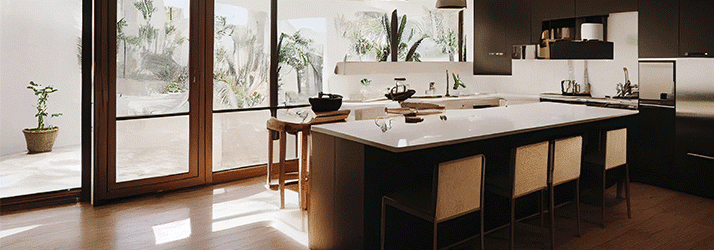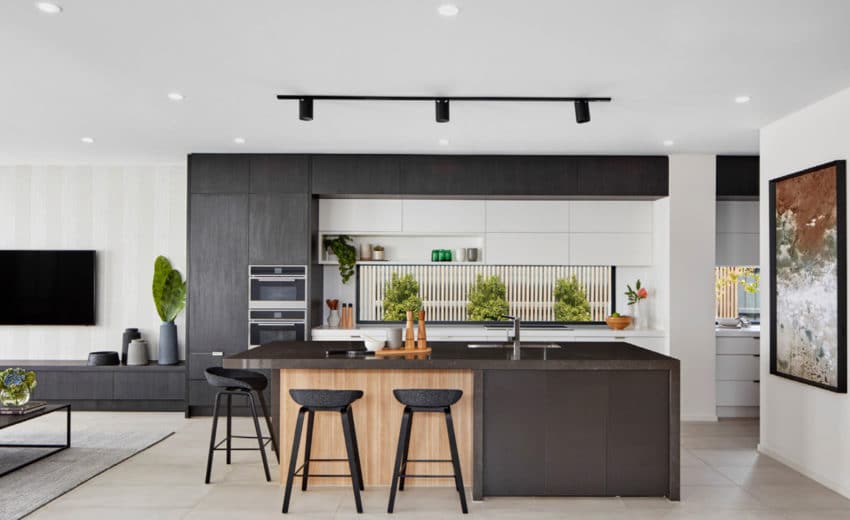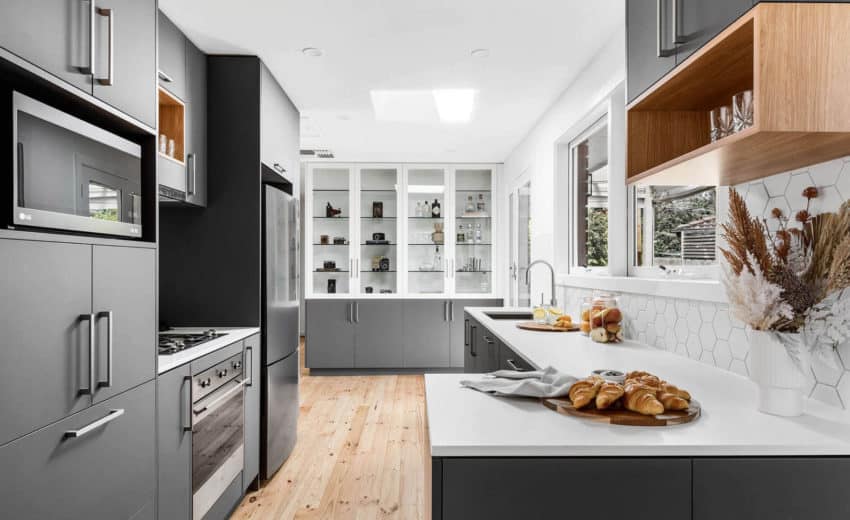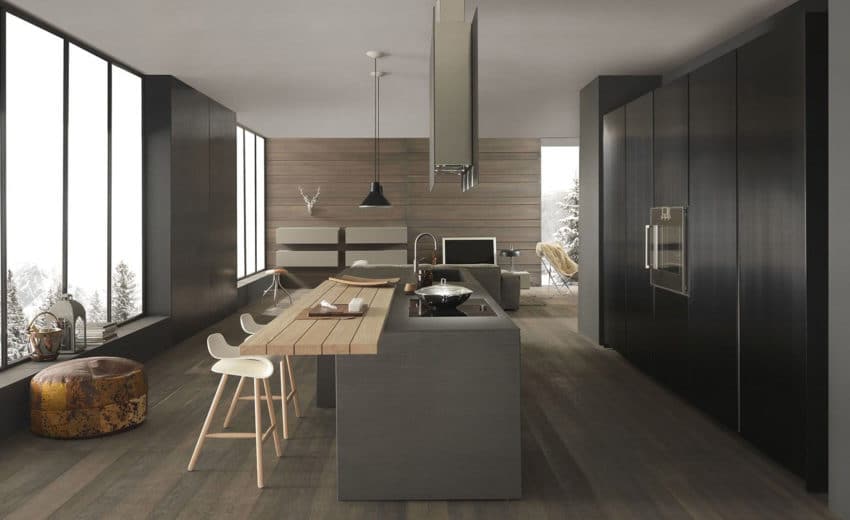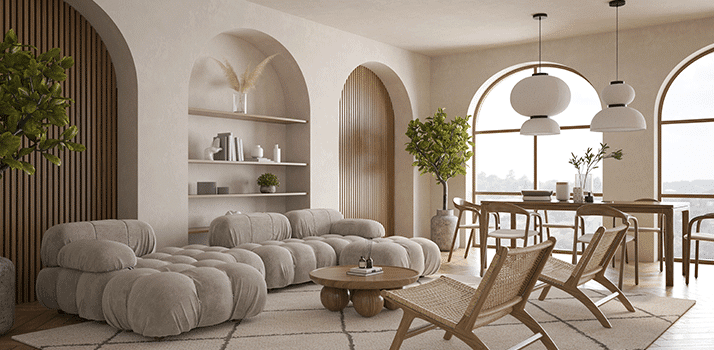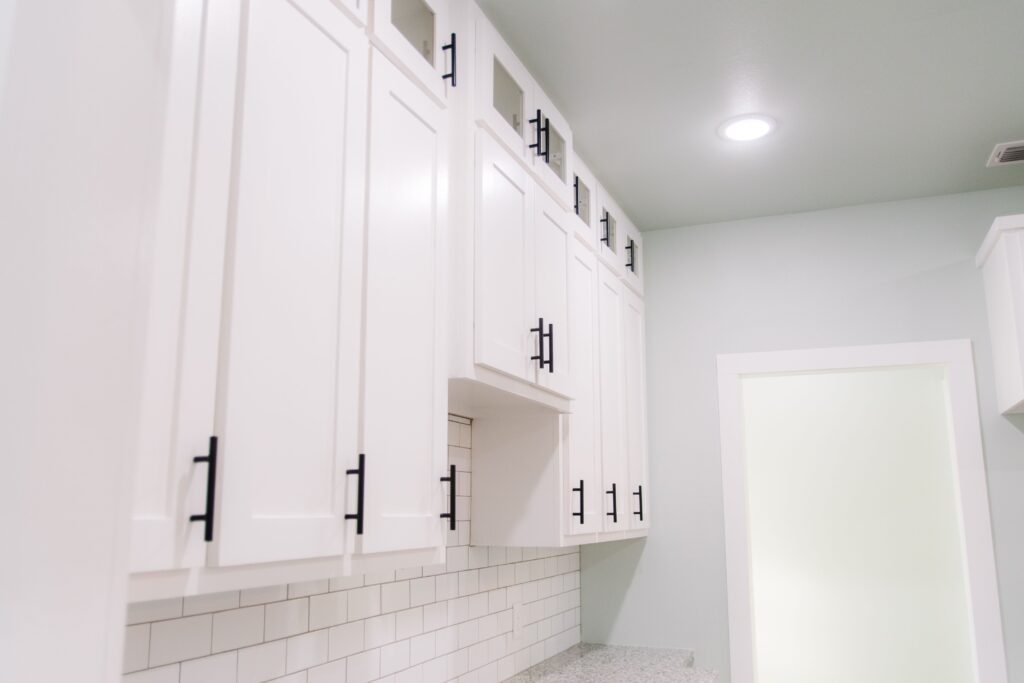
Breathe New Life Into Your Space: Refinish Kitchen Cabinets With AMD Construction & Remodeling
Does your kitchen feel old and boring? Are your cabinets scratched, faded, or outdated? Many homeowners feel this way after years of use. You might think replacing your cabinets is the only option, but that can be expensive and stressful. Here’s a better idea: refinish kitchen cabinets.
This affordable, eco-friendly solution can make your kitchen look brand new without spending a fortune. We at AMD Construction & Remodeling are masters in producing stunning, personalized finishes and refinishing cabinets. Let us show you how easy it is to give your kitchen a fresh, updated look.
Why Replace When You Can Refinish Kitchen Cabinets? A Game-Changer for Your Kitchen
Replacing cabinets might seem the best way to update your kitchen, but it’s not always necessary. Most cabinets are still in good shape, even if they don’t look great. Refinishing can save you time, money, and hassle while giving you amazing results.
- Save Money
Replacing cabinets can cost a lot of money. Refinishing is much cheaper and gives you a beautiful new look without breaking the bank.
- Eco-Friendly
Throwing out old cabinets creates waste. When you refinish kitchen cabinets, you reuse what you already have, which is better for the environment.
- Less Stress
Replacing cabinets is a big project. It takes weeks and can disrupt your life. Refinishing is quicker and easier, so you can enjoy your updated kitchen sooner.
- Keep Quality Cabinets
If your cabinets are made of solid wood or other strong materials, why replace them? Refinishing updates the style while maintaining quality. Refinishing cabinet doors is our area of expertise at AMD Construction & Remodeling. Our experts can make old cabinets look like new with less hassle and cost.
Custom Cabinet Finishes That Will Rekindle Your Love for Your Kitchen
Since every kitchen is different, your custom cabinet finishes should also reflect your style. You can choose a finish for your kitchen cabinets that complements your style and house. AMD Construction & Remodeling provides many alternatives to create a stunning kitchen.
- Modern Stains
Stains can show off the natural beauty of your wood cabinets. From light tones to dark, rich colors, stains give your kitchen a clean and stylish look.
- Classic Paints
One easy approach to make a significant difference is with paint. Choose soft neutrals for a timeless feel or bold colors to add personality. Whatever you pick, AMD will apply it perfectly.
- Textured Glazes
Glazes add texture and depth to your cabinets. They create a unique look that makes your kitchen stand out. Our staff will assist you in selecting the ideal Custom cabinet finishes. Your cabinets will appear better than ever with our help.
The Importance of Cabinet Refinishing Experts for the Ideal Kitchen Makeover
Some people try to refinish cabinets independently, but it’s not as easy as it looks. Without the right tools and experience, you might have uneven paint or damaged surfaces. Here’s why hiring AMD Construction & Remodeling’s cabinet refinishing experts is the smart choice:
- Perfect Results
Our team pays attention to every detail. We prepare the surfaces, apply the finish smoothly, and ensure everything looks great.
- Long-Lasting Beauty
We use high-quality materials to ensure your cabinets stay beautiful and strong for years.
- Save Time and Effort
DIY projects can take time and may not turn out as you hope. Letting cabinet refinishing experts handle the job means you’ll do it faster and better.
- Personalized Service
Together, we design a look you’ll adore. We can create a classic finish or a contemporary style for you. When you trust professionals to do kitchen cabinet refinishes, you can relax knowing your kitchen is in good hands.
Behind the Scenes: How We Cabinet Door Refinishing Step by Step
To guarantee the greatest outcomes, AMD Construction & Remodeling follows to a thorough procedure with cabinet door refinishing. Here’s what we do:
- Consultation
We meet with you to talk about your goals. We’ll walk you through the finishing options and assist you in selecting the ideal kitchen design.
- Preparation
We remove the cabinet door refinishing and cleaning, sanding, and priming it. This step ensures the finish will stick well and look smooth.
- Finishing
We apply your chosen finish in even coats. Whether it’s a stain, paint, or glaze, we make sure it looks flawless.
- Reinstallation
We replace the cabinet doors and hardware when the finish settles. We thoroughly inspect everything to ensure perfection. This step-by-step process ensures your cabinets look fresh, clean, and professionally done.
From Drab to Fab: Real Stories of Refinished Kitchen Cabinets
We’ve helped many homeowners fall in love with their kitchens again. One client had dark, outdated cabinets that made their kitchen feel small. We refinished them with a soft white paint, and the whole space felt brighter and more open.
Another family wanted to update their solid oak cabinets. Instead of replacing them, we added a rich espresso stain. The result was a warm, elegant look that matched their style perfectly. Our clients love how easy and affordable cabinet refinishing is. The before-and-after results speak for themselves; we’re proud to share their stories.
Let AMD Upgrade Kitchen Cabinets for Your Dream Kitchen
Your kitchen should be a space you enjoy every day. Refinishing kitchen cabinets allows you to update your kitchen without spending a fortune or dealing with major renovations. AMD Construction & Remodeling can assist you with excellent craftsmanship and customized finishes. You should update your kitchen immediately. To arrange a consultation, contact AMD Construction & Remodeling right now. Let us bring your vision to life and make your kitchen beautiful again!
FAQs
- What does it mean to cabinet redo for kitchen?
Refinishing kitchen cabinets means giving old ones a new look without replacing them. It includes sanding, painting, or staining to make them look fresh and updated.
- How long does it take to refinish cabinets in the kitchen?
It usually takes 3 to 7 days, depending on how many cabinets you have and the work needed. A professional like AMD Construction & Remodeling can tell you exactly how long it will take.
- Is cabinet refinishing cheaper than replacing cabinets?
Yes! Refinishing is much cheaper than replacing your cabinets. It gives your kitchen a fresh look at a lower price.
- Can I change the color of my kitchen cabinets when refinishing?
Yes! Refinishing lets you change the color of your cabinets. You can choose any color you like, whether it’s darker or lighter.
- Do I need to remove everything from my cabinets before refinishing?
Yes, it’s best to take everything out of your cabinets before starting. This helps the work go smoothly and keeps your items safe.
- Can I refinish my kitchen cabinets myself?
You can, but it’s not easy. Refinishing takes time and skill. If you want the best results, it’s better to hire a professional like AMD Construction & Remodeling.
- How do I take care of refinished cabinets?
To keep your cabinets looking good, clean them with a soft cloth and mild cleaner. Avoid harsh chemicals or scrubbers. You can also use wax or polish to protect the finish.
- Are my cabinets good for refinishing?
Most solid wood or laminate cabinets are great for refinishing. But if your cabinets are very damaged or warped, you may need to replace them. A professional can help you decide.
Want to make your kitchen look fresh and new? Let AMD Construction & Remodeling refinish kitchen your cabinets and bring life back to your space. Call us today to get started!
Also read:
Transform Your Bathroom with AMD’s Best Professional Bathroom Remodel Allen Experts
AMD Construction’s Premium Shower Remodeling in Allen: Achieve Your Dream Bathroom Today!
The Best Commercial Designers in Allen Texas: AMD Construction’s Unmatched Brilliance


